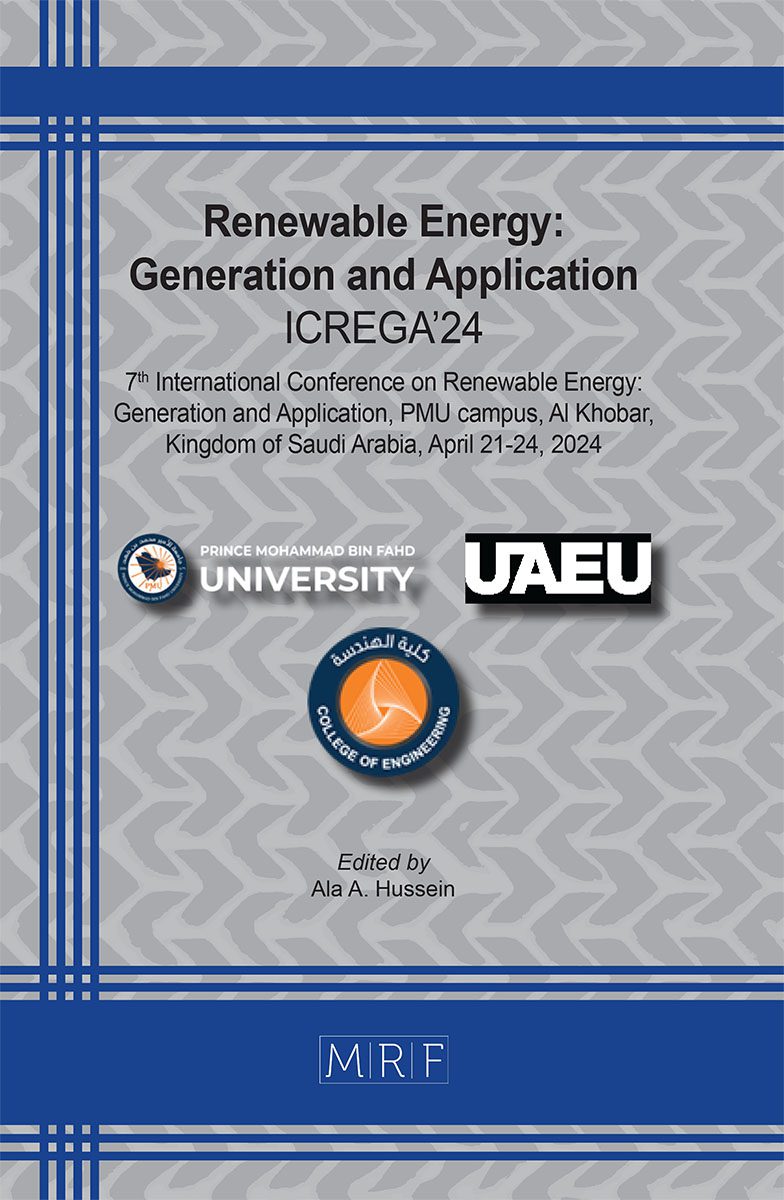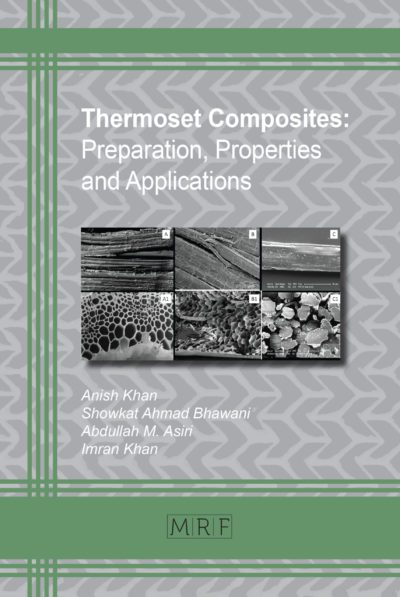–
Green and environmental-friendly material for sustainable buildings
Noura Al-MAZROUEI, Amged ELHASSAN, Waleed AHMED, Ali H. Al-MARZOUQI, Essam ZANELDIN
download PDFAbstract. In construction, incorporating waste materials such as bio-binders and fine aggregates plays a vital role in promoting environmentally friendly building methods. Utilizing these materials for a second time reduces waste generation, contributing to conserving valuable natural resources. This underscores the importance of sustainable construction practices. This study outlines the experimental results concerning the mechanical attributes when employing a combination of micro sand silica and a bio-binder, specifically Abelmoschus esculentus. The investigated mechanical properties in this study encompass modulus, strength, and toughness. The experimentation involved mixing Abelmoschus esculentus with varying weight percentages and three distinct micro-size particles and then compressing them into cylindrical samples. Abelmoschus esculentus demonstrated favorable adhesion properties with sand silica particles, and the findings suggest a noteworthy impact on the mechanical properties upon its addition. Overall, it was observed that the optimal mechanical properties were attained with a 15% weight ratio of Abelmoschus esculentus bio-binder at a particle size of 250 µm.
Keywords
Natural Binder, Sustainable Material, Composite, Construction
Published online 7/15/2024, 5 pages
Copyright © 2024 by the author(s)
Published under license by Materials Research Forum LLC., Millersville PA, USA
Citation: Noura Al-MAZROUEI, Amged ELHASSAN, Waleed AHMED, Ali H. Al-MARZOUQI, Essam ZANELDIN, Green and environmental-friendly material for sustainable buildings, Materials Research Proceedings, Vol. 43, pp 31-35, 2024
DOI: https://doi.org/10.21741/9781644903216-4
The article was published as article 4 of the book Renewable Energy: Generation and Application
![]() Content from this work may be used under the terms of the Creative Commons Attribution 3.0 license. Any further distribution of this work must maintain attribution to the author(s) and the title of the work, journal citation and DOI.
Content from this work may be used under the terms of the Creative Commons Attribution 3.0 license. Any further distribution of this work must maintain attribution to the author(s) and the title of the work, journal citation and DOI.
References
[1] Huang, Y., Wang, Y. D., Rezvani, S., McIlveen-Wright, D. R., Anderson, M., Mondol, J., Zacharopolous, A., & Hewitt, N. J. (2013). A techno-economic assessment of biomass fuelled trigeneration system integrated with organic rankine cycle. Applied Thermal Engineering, 53(2), 325–331. https://doi.org/10.1016/j.applthermaleng.2012.03.041
[2] Muniyappan, D., Pereira Junior, A. O., M, A. V., & Ramanathan, A. (2023). Synergistic recovery of renewable hydrocarbon resources via microwave co-pyrolysis of biomass residue and plastic waste over spent toner catalyst towards sustainable solid waste management. Energy, 278. https://doi.org/10.1016/j.energy.2023.127652
[3] Di Fraia, S.; Fabozzi, S.; Macaluso, A.; Vanoli, L. Energy potential of residual biomass from agro-industry in a Mediterranean region of southern Italy (Campania). J. Clean. Prod. 2020, 277, 124085. https://doi.org/10.1016/j.jclepro.2020.124085
[4] Bumanis, G.; Vitola, L.; Pundiene, I.; Sinka, M.; Bajare, D. Gypsum, Geopolymers, and Starch—Alternative Binders for Bio-Based Building Materials: A Review and Life-Cycle Assessment. Sustainability 2020, 12, 5666. https://doi.org/10.3390/su12145666
[5] Sayed, M. A., El-Gamal, S. M. A., Mohsen, A., Ramadan, M., Wetwet, M. M., Deghiedy, N. M., Swilem, A. E., & Hazem, M. M. (2024). Towards a green climate: production of slag-red brick waste-based geopolymer mingled with wo3 nanoparticles with bio-mechanical achievements. Construction and Building Materials, 413 https://doi.org/10.1016/j.conbuildmat.2024.134909
[6] Ingrassia, L.P.; Cardone, F.; Canestrari, F.; Lu, X. Experimental investigation on the bond strength between sustainable road bio-binders and aggregate substrates. Mater. Struct. 2019, 52, 80. https://doi.org/10.1617/s11527-019-1381-6
[7] Ding, Z.; Gong, W.; Li, S.; Wu, Z. System Dynamics versus Agent-Based Modeling: A Review of Complexity Simulation in Construction Waste Management. Sustainability 2018, 10, 2484. https://doi.org/10.3390/su10072484
[8] Othman, A. A. E., & Abdelrahim, S. M. (2019). Achieving sustainability through reducing construction waste during the design process. Journal of Engineering, Design and Technology, 18(2), 362–377. https://doi.org/10.1108/JEDT-03-2019-0064
[9] Ahmed, W.; Siraj, S.; Al-Marzouqi, A.H. 3D printing PLA waste to produce ceramic based particulate reinforced composite using abundant silica-sand: Mechanical properties characterization. Polymers 2020, 12, 2579. https://doi.org/10.3390/polym12112579
[10] Zaharuddin, N. D., Noordin, M. I., & Kadivar, A. (2014). The use of hibiscus esculentus (okra) gum in sustaining the release of propranolol hydrochloride in a solid oral dosage form. Biomed Research International, 2014, 735891–735891. https://doi.org/10.1155/2014/735891
[11] Elkhalifa, A. E. O., Alshammari, E., Adnan, M., Alcantara, J. C., Awadelkareem, A. M., Eltoum, N. E., Mehmood, K., Panda, B. P., & Ashraf, S. A. (2021). Okra (abelmoschus esculentus) as a potential dietary medicine with nutraceutical importance for sustainable health applications. Molecules (Basel, Switzerland), 26(3). https://doi.org/10.3390/molecules26030696
[12] International Organization for Standardization. ISO 604: Plastics — Determination of compressive properties. Geneva, Switzerland: ISO, 2022.
[13] Cho, J.; Joshi, M.S.; Sun, C.T. Effect of inclusion size on mechanical properties of polymeric composites with micro and nano particles. Compos. Sci. Technol. 2006, 66, 1941–1952. https://doi.org/10.1016/j.compscitech.2005.12.028
[14] Fan, S.; Cheng, Z. A micropolar model for elastic properties in functionally graded materials. Adv. Mech. Eng. 2018. https://doi.org/10.1177/1687814018789520













